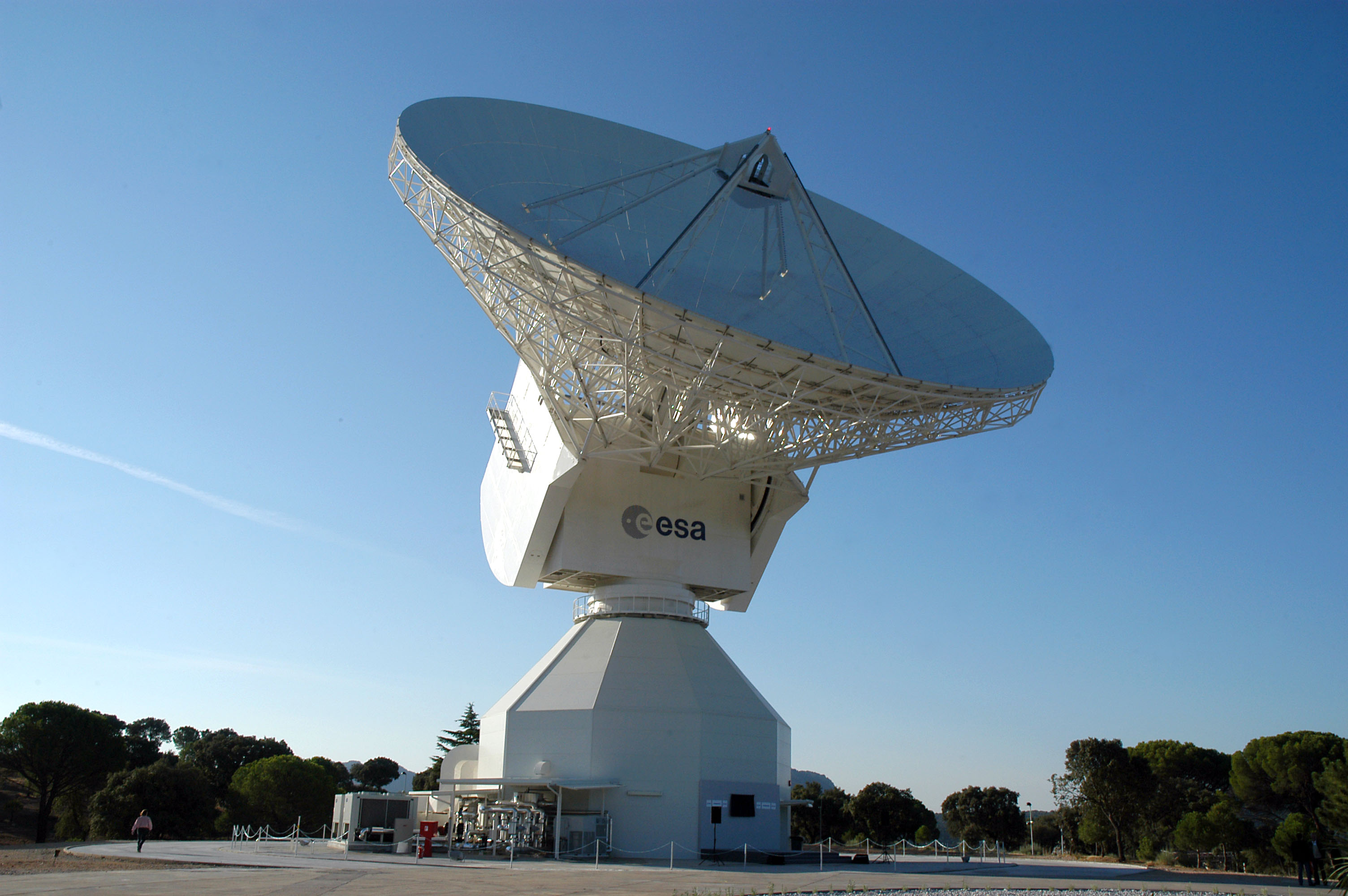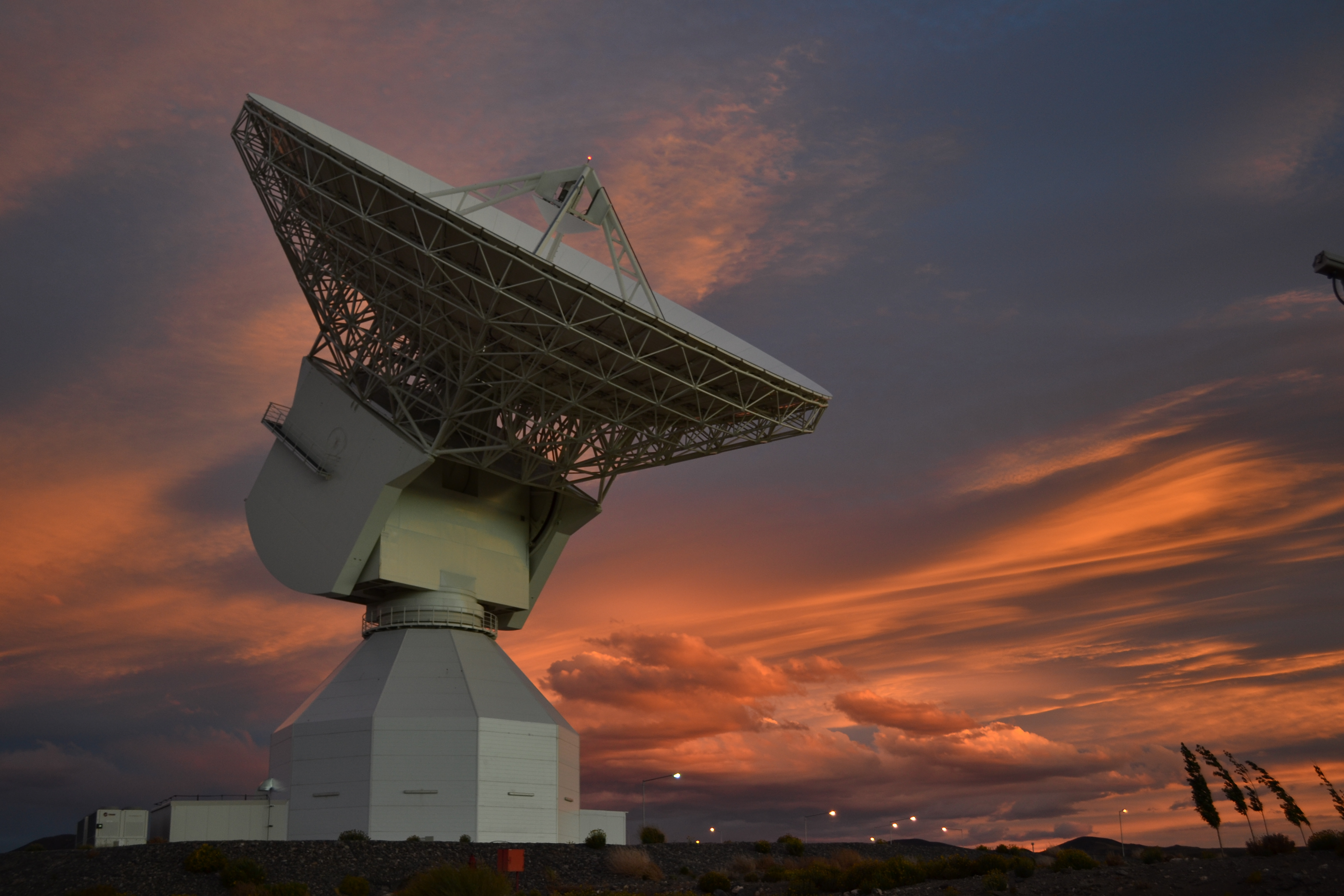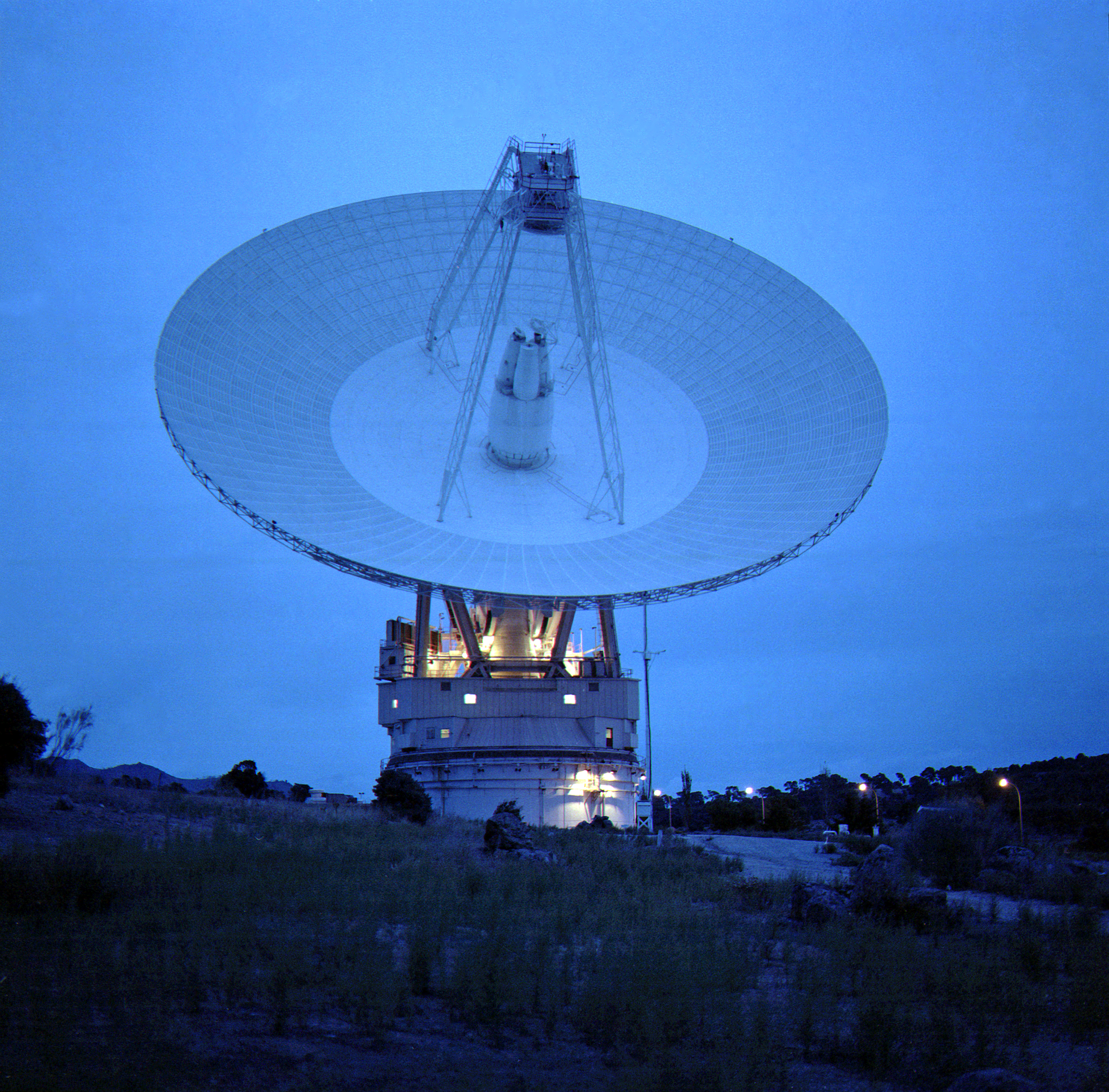As Rosetta counts down to a memorable comet landing and end of mission on 30 September, here’s a brief profile of the three ESA deep-space ground stations that are tracking the spacecraft in its final days. The mission is also being supported by NASA’s Deep Space Network (DSN) and in fact Rosetta will rely on support from the DSN 70 m-diameter dishes in its final days, complementing the support provided by the ESA stations.
Editor’s note: ESA’s three deep-space stations are part of the Agency’s Estrack ground station network, a global system of ground stations providing links between satellites in orbit and ESOC, the European Space Operations Centre, Darmstadt, Germany. The core Estrack network comprises nine stations in seven countries. The essential task of all ESA ground tracking stations is to communicate with spacecraft, transmitting commands and receiving scientific data and spacecraft status information. More information via the Estrack web pages.
ESA Malargüe station, Argentina
Malargüe station supports many of ESA’s most important exploration missions, including Rosetta, Mars Express, ExoMars, LISA Pathfinder and Gaia. Credit: ESA/D. Pazos
Location: 30 km from Malargüe, Mendoza province, about 1200 km west of Buenos Aires Dish size: 35m diameter Moveable structure: 610 tonnes Entered service: 2013 Routine tracking: Rosetta, Mars Express, ExoMars, Gaia, other solar system missions Web: https://www.esa.int/mlg
The station conducted its first test tracking in 2012, successfully linking up with ESA’s Mars Express spacecraft at 193 million km from Earth. Since inauguration, it has been a critical component of ESA’s deep-space tracking capability. Joining the existing ESA 35m stations in Australia and Spain, it ‘closed the gap’, ensuring 360° coverage for the growing fleet of ESA and partner missions exploring our Solar System.
It features Low Noise Amplifiers cooled to 15 degrees Kelvin (-258 Celsius) that enable the receipt of ultra-weak signals from deep space, while atomic clocks are used for very precise radiometric measurements, needed to accurately locate and guide space probes.
For the Rosetta mission, Malargüe station has provided routine tracking support, including transmitting telecommands to Rosetta and the Philae lander, and receiving critical spacecraft status and health information and the precious scientific data gathered by the instruments.
Last call: In the six days ending 30 September, Malargüe station will have communicated with Rosetta five times, with the final pre-landing contact set for mid-day Wednesday.
Interesting to note: The station is located in Mendoza province, a region of Argentina famous worldwide for the wine produced in its dry, sunny climate. The location of the 1972 Andes flight disaster, dramatised in the 1993 film Alive: The Miracle of the Andes, is just 138 km, as the crow flies, from ESA’s station.
ESA Cebreros station, Spain

ESA’s 35 m-diameter deep-space dish antenna, DSA-2, is located at Cebreros, near Avila, Spain. It is controlled, as part of the Estrack network, from ESOC, the European Space Operations Centre, Darmstadt, Germany. Credit: ESA
Location: 12 kms south of Cebreros town, Avila province; West of Madrid Dish size: 35m diameter Moveable structure: 610 tonnes Entered service: 2005 Routine tracking: Rosetta, Mars Express, ExoMars, Gaia, other solar system missions Web site: https://www.esa.int/ceb
Construction on the Cebreros station started in early 2004 and the station was formally inaugurated in September 2005. The first signal was received from Venus Express on 10 November 2005, marking the start of operations. Since then, it has supported a wide range of ESA and partner agency missions, including the landing of NASA’s Mars Science Laboratory (MSL) in 2012.
Like ESA’s Malargüe and New Norcia stations, Cebreros incorporates state-of-the-art technology including a control system providing the highest possible pointing accuracy under the site’s environmental, wind and temperature conditions.
For the Rosetta mission, Cebreros station has provided routine tracking support, including transmitting telecommands to Rosetta and the Philae lander, and receiving critical spacecraft status and health information and the precious scientific data gathered by the instruments.
Last call: Cebreros station made its last planned link-up with Rosetta on Monday, 26 September. It will serve as a ‘hot back-up’ during the crucial comet landing phase on 30 September.
Interesting to note: ESA’s Cebreros station was built on the site of a former NASA tracking station (DSS 62) closed in 1981.
ESA New Norcia station, Australia

ESA’s 35 m-diameter deep-space tracking station at New Norcia, Australia, seen during a dramatic sunset, 11 November 2014. Credit: ESA
Location: 8 km south of New Norcia, which is about 150 km north of Perth, Western Australia Dish size: 35m diameter Moveable structure: 610 tonnes Entered service: 2003 Routine tracking: Rosetta, Mars Express, ExoMars, Gaia, other solar system missions Webpage: https://www.esa.int/nno
Construction of ESA’s first deep-space tracking station began in 2002, in part driven by the need to provide reliable deep-space communications with the Rosetta comet chaser, set for launch in 2004. Indeed, New Norcia has served as the primary station for the mission, providing extended support throughout Rosetta’s cruise phase, planetary flybys, asteroid encounters and, finally, the arrival at, landing on and orbiting of comet 67P/C-G.
Like ESA’s Malargüe and Cebreros stations, New Norcia is remote controlled for routine operations from ESA’s ESOC mission control centre in Darmstadt, Germany. All three stations are equipped with equipment and technology to support radio science, enabling scientists to analyse received signals to study planetary atmospheres.
For the Rosetta mission, New Norcia station has served as prime ground station and provided routine tracking support, including transmitting telecommands to Rosetta and the Philae lander, and receiving critical spacecraft status and health information and the precious scientific data gathered by the instruments.
Last call: In the six days ending 30 September, New Norcia station will have communicated with Rosetta four times, with the final pre-landing contact set for early-day Wednesday. It will serve as a ‘hot back-up’ during the crucial comet landing phase on 30 September.
Interesting to note: The town of New Norcia, Western Australia, is Australia’s only monastic town. The Benedictine community was established in 1847. In August 2016, New Norcia station acquired signals from the international Cassini spacecraft orbiting Saturn, across more than 1.4 billion km of space – the longest link ever made by an ESA station.
NASA Deep Space Network support to Rosetta end of mission
NASA’s DSN network has provided continuing, routine support to the Rosetta mission since the start of the mission (see “Tracking the spacecraft following a comet”).
Numerous DSN stations – including the three, giant 70m antennas located at Madrid, Spain, Canberra, Australia, and Goldstone, California, have provided robust support throughout the mission, providing indispensable communication support when ESA’s smaller stations alone would have been challenged to establish links due to the distances involved.
DSN stations have also provided prime or back-up links during critical mission phases, when commands absolutely had to be transmitted without delay or interruption or in case of any failure at a prime station.
DSN support was especially critical in 2014 when Rosetta woke up from 31 months of hibernation in January, during arrival in August that year and during Philae’s historic landing the following November.
Outside critical phases, DSN stations have augmented coverage, helping to increase science return.
For the end of mission, DSN support will again be crucial.
In the final week leading up to 30 September, one of NASA’s 34m stations (DSS 25) and the three 70m stations (DSS 14 at Goldstone, DSS 43 at Canberra and DSS 63 at Madrid) are providing prime or back-up links to the spacecraft.
The last command instructions will be sent up from the flight control team early in the morning of 30 September via DSS 43 at Canberra or DSS 63 in Madrid.
Once Rosetta has commenced its ‘big dive’ – its final descent to the surface of comet 67P/C-G – prime communication will be provided by DSN Madrid, with hot backups provided by ESA Cebreros and Malargüe stations.
Data received by the DSN antenna – including the extremely important final science data from most of the instruments including the OSIRIS imaging system – will be immediately passed to ESA’s mission control centre at ESOC, Darmstadt, Germany. Science teams will be working there to receive, process and share the last images, amongst other ‘final science.’










Discussion: no comments